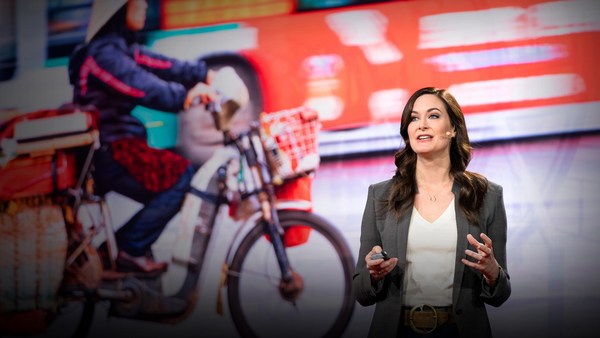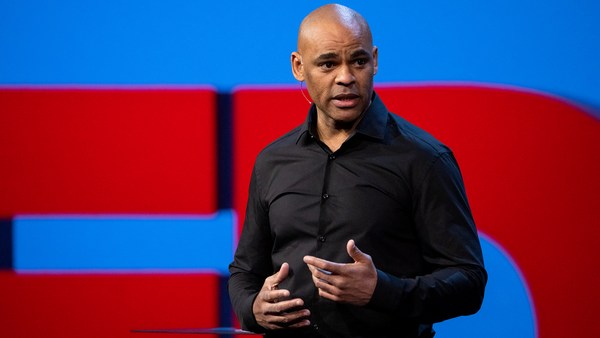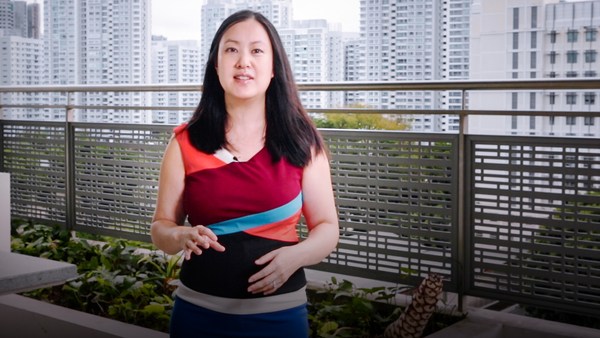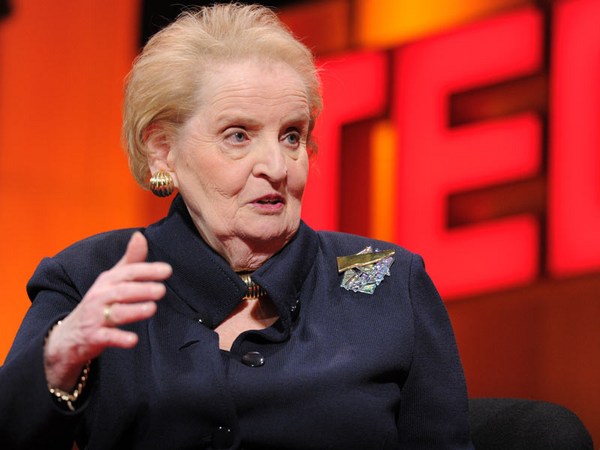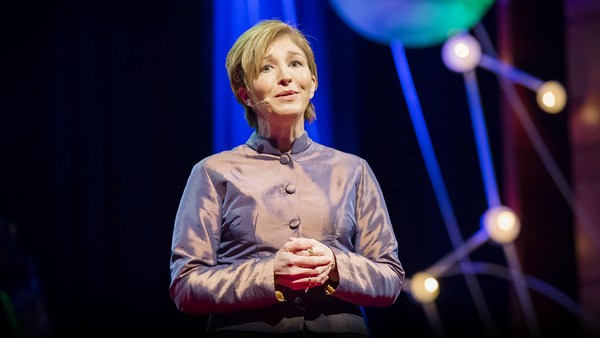What if our efforts to build a better planet benefited half of this room more? What if we reduced our emissions but increased the gap between men and women? What if by 2050 we reach net zero, but women had a lower chance than men to find a decent job? Disturbing, right? And yet, this is exactly what my colleagues and I found while studying the links between women and climate over the last years. Our research has shown that climate action, as it is unfolding, could set gender equality back by 15 years. I'm going to say that again. So climate action, not climate change, climate action, meaning all the efforts that are being made to reduce our emissions, to adapt our lives to a warmer planet, could actually set gender equality back by 15 years.
I know what you must be thinking. This is a total buzzkill.
(Laughter)
So the climate challenge is not big enough, you’re adding solving gender equality to the equation? I get the feeling. But the good news is, if we do it right, we have a unique chance to advance both the climate agenda and gender equality. How? By being intentional about it. But first, let's go back to that 15-year setback risk I mentioned. I give it to you, it's counterintuitive to say that climate action that aims at building a more viable future to all of us could actually have a negative impact on gender equality.
So let me explain. Obviously women, as well as men, women even more than men, will benefit from living in a more sustainable planet. Their health, their education, their livelihoods will improve. But what I'm saying is that there is also a risk that women might miss out on the green economy's massive investments and job opportunities.
And here are two examples of that. By 2030, 65 million green jobs will be created. The highest-paid, more stable ones will require what’s called STEM education: science, technology, engineering and mathematics. Today, women represent 35 percent of STEM students globally. So they might be less qualified to access these green jobs.
Second example: by 2030, companies in highly emitting sectors -- such as energy, building materials, industrial goods -- will be spending as much as 500 billion dollars to train their employees in new green skills.
Now, these industries are historically male-dominated, so mechanically, women are less likely to participate in these retrainings, widening the skill gap between men and women again in accessing the jobs of the future. So, see, the risk is real. Women might miss out on these opportunities and investments, or at least miss out on part of them, even if this wasn't the initial intent.
So what is it that we need to do to have a climate action that solves these two major challenges at the same time: gender equality and sustainability? Well, we need to do something that seems very simple, yet very often overlooked. When investing in green projects and developing green products, crafting green legislations, we need to make sure that women as well as men will equally benefit. Not more, not less. Just equally.
Might seem obvious. You might even think, "Isn't that what we're already doing?" But history has showed us that time and time again, even though this is what we think we're doing, this is not what is actually happening, at least not naturally, organically, not without an explicit intent. So we need to take this intent into climate action. We need to naturally, systematically, intentionally embed what you could call a gender lens in all of the green economy’s investments, projects and legislations.
And I am not just talking about projects targeting women or funds dedicated to women or a gender day in climate negotiations. I am talking about gender as an intentional forethought in every green project, every green investment, every green legislation.
Let's take an example. Green cities. Green cities are a great illustration of how we could integrate this gender lens and have climate action boost gender equality instead of setting it back. From Chicago to Shanghai, from Copenhagen to Rio, most large cities have ambitious programs to become greener. Two trillion dollars will have to be spent every year for the next 20 years to upgrade urban infrastructure and make it more sustainable. And this covers housing, energy safety, public transportation, green spaces, you name it. With the right approach, these cities can become greener and more inclusive of women.
Now greener, they sort of know how to do that. They have already initiated multiple projects, and there is already a lot of research in that field.
But becoming more inclusive of women, we hear less about that. This is less documented. And yet there is a great story that can serve as an inspiration. This story takes place in the beautiful city of Vienna, in Austria. In the '90s, planning officials in Vienna realized that women were less satisfied with transportation systems than men. Because these systems are designed for people going between home and work, between suburbs and city centers at mostly set times. But women, although they make up the majority of public transportation users, women's trips are nothing like that. They are much more fragmented, they are much shorter, they require multiple transportation modes, and they don't necessarily happen during rush hour. All of this because women combine their work trips with their domestic and caregiving responsibilities. And this, transportation, is a major factor when it comes to women’s labor and participation [in] the economy. They also noticed something else. Before the age of nine, boys and girls would equally go to parks. But when girls reach the age of nine, something strange happens. They almost disappeared from public parks. So they did some research and they confirmed that, no, it’s not that all of a sudden, when girls turn nine, they no longer are interested in public parks. It's again, because of the way these parks are designed with their single large open space and multiple football cages, boys feel welcomed, girls feel they need to compete for space. So they just stopped going there.
So bottom line, through these two examples and many more, they realized that the gender-neutral approach that the city had and that most cities in the world have, this gender-neutral approach can actually be a women-blind one. So they decided to intentionally design a gender-equal urban planning program. So they surveyed men and women to better understand the way they live in the city. They brought in female architects and urban planners to participate alongside their male colleagues, to participate [in] the city’s redesign. They added gender assessment in social housing and infrastructure contracts. So see, just like that, every step was made with the intention, the explicit intention, to make sure that women will benefit as well as men. Again, not more, not less, as well as men. So in parks they have added foot paths to divide up space. They have integrated a wider range of activities such as volleyball. And just like that, teenage girls came back to parks. And this has benefited teenage girls, but not only them. Every year since 2009, except for COVID years, Vienna has been named the best city in the world to live in. Now, it's not just the gendered approach, but it clearly contributed because for the first time, the specific needs of the other half of the population were taken into account.
Now, what does Vienna's story tell us? It tells us that if we want women to benefit from a green city project, from an urbanism project, or from any project, it needs intention. And intention means at least these three ingredients: upfront and ascending women specific needs, even if the project is not specifically targeting women; involving women in the design of the project; and specifically measuring the impact of the project on women to be able to adjust if necessary.
So this way, with this approach, we could correct the biases that are behind the gender-neutral urban planning programs that exist everywhere. And we could duplicate Vienna’s intentional experience in every green city.
And I left the best part for the end. When involved in urban planning, women proved to be active agents of sustainability. Statistically, the most sustainable cities are also the ones with the highest representation of women in policy making and leadership positions. So this gendered approach will not only make green cities more inclusive of women, it will also make them greener. Treating women exactly like men, as I have heard multiple times from policymakers and leaders, is not what will get us to gender equality because it turns a blind eye to the biases that we all have, and it tends to perpetuate pre-existing inequalities and could even be widening them. Urbanism is just one example of how the green economy will revolutionize the way we move, work, eat. If we intentionally embed a gender lens in the way we will sustainably rebuild, rethink all of these aspects, we can advance gender equality at the same time, and this will in turn have a positive impact on the planet. See, we can save the world all at once, after all.
Thank you.
(Applause)
